Fact File on Muslim Contributions to Science and Technology
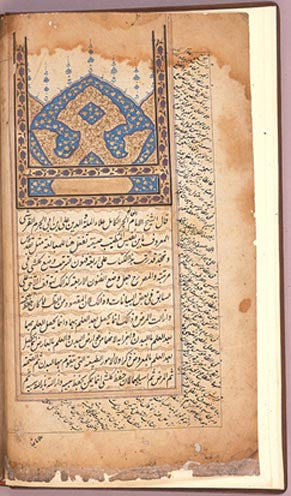
Khwarzimic Science Society, Saturday 23 June 2001
The contribution of Muslims to Human Civilisation is a fact of history that cannot be denied. Even the greatest non-Muslim scholars have stood testimony to this fact, in the numerous volumes they have produced over the centuries. It has been revealed that Muslims made cataclysmic and revolutionary additions and prognoses of the knowledge that existed then. Without their mention, we would make a serious injustice on our part, on our own civilization and modern values.
No discipline is void of their names: medicine and surgery, pharmacy and pharmacology, engineering and technology, astronomy and astrology, mathematics and physics, chemistry and geography, botany and zoology, philosophy and history, arts and culture. It is only the ignominy that has become a part of our “rich” tradition of forgetting our transition from Greek to Western supremacy.
Muslims at the one hand mediated Greek and Latin knowledge and on the other, had made serious attacks and commentaries on the work that existed then. They added, for the first time, the ethos of experiment and observation to science. They founded new branches that were hitherto unknown. They preserved their global heritage, of what is called ‘science’ for the thousands of generations – in the East and the West – that was to follow them in chronology. Preserving this stock of gold is let alone, an unforgettable and indefatigable contribution of Muslims to Human Endeavour. But Muslims had meant much more than mere transliterators or mediators. They were discoverers and inventors in their own right and a part of the modern scientific tradition, which the Greeks, Romans, Indians, and Chinese had promulgated centuries ago.
Today, we should appreciate the rational truth that Muslims have lost out on scientific enterprise and the West has taken up the torch of learning and knowledge. Let us learn from them and at the same time learn from our past.
The facts mentioned below, have been compiled from various internet and bibliographical sources. These facts are in no chronological order.
Khwarzimi: Algebra – Analytical Geometry
Muhammad Bin Musa Alkhwarazmi is considered to be one of the founders of algebra. The word ‘algorithm’ is a corruption of his name or the name of the province in Afghanistan, where he was born. He used the ‘cipher’ (zero) that was devised in India some centuries earlier. The very word ‘zero’ is a derivative of the Arabic ‘sefr’ or its close cousin, the ‘cipher’. His treatise on ‘Algebra and Equations’ (Kitab-ul-Hisab-wal-jabr-wal-Muqabala) was taught for centuries in European Universities. In his book, which is available in an English translation, (Pakistan Hejira Council, Islamabad), using analytical geometry, he proved various Islamic laws of inheritance. Muslims were hence, the pioneers in analytical geometry.
Al-Rhazi and Zahrawi – Surgery
Abu Bakar Muhammad ibn-e-Zakariyya Al-Rhazi (865-925) wrote over 200 books, including “Kitab-al-Mansoori” and “Kitab-al-Hawi” (The Comprehensive Book). He was in charge of the Hospital at Rayy, where he was born. He found a treatment for kidney stones. He proposed the proving of drugs on animals before human experimentation. Zahrawi could also perform Caesarean sections. As he was asked to propose a site for the building of a hospital by the Muslim Caliph, he hung slices of meat at different places in the city and chose the place where the meat was infected at the slowest. Thus he had a thorough understanding of the concept of hygiene and sterilization. He was the head of the famous Muqtadari Hospital at Baghdad, which had about 4 international standard hospitals. In fact, these hospitals had set the standards themselves.
Chemistry
The science of chemistry was started for the first time by Muslims – the word ‘alchemy’ in recognition of this fact. Jabir-bin-Hayyan is recognized as the father of chemistry. He proceeded Boyle by about 700 years. Muslims chemists invented nitric, hydrochloric and sulphuric acids, salt of niter, salt of peter, calcium carbonate and numerous other salts. They invented laboratory analytical techniques like distillation, sublimation, calcination, crystallization, to mention a few. Many modern laboratory glassware apparatus owe their designs to Muslim geniuses.
Al-Batani
Abu Abdullah Al-Batani (862-929) was one of the greatest astronomers of his time. He for the first time accurately determined the duration of the terrestrial year to be exactly 365 days, 5 hours, 46 minutes and 24 seconds. He determine the eccentricity of the earth’s orbit, the mean and true orbit of the earth and opposing Ptolemaic view, believed in the possibility of annular eclipses. His work could be hailed as the stepping stone of the works of Johannes Kepler, Tyco Brahe, and Copernicus, who followed him by several centuries. Batani’s astronomical tables were published in the 12th century under the name “De Sceinta Stellarum De Numeris Stelelrum et Motibus”.
Buzjani
Abul-Wafa Buzjani (940-997) of Baghdad was a coveted trigonometer and astronomer. He devised the construction of a parabola in a unique way, showed the validity of the sine theorem relative to spherical triangles, he was well-versed in using the fundamental laws and identities of trigonometry, introduced the secant and cosecant for the first time. Much of the advances and relations in trigonometry can be traced back to him.
Ibn-Sina
Ibn-Sina (980-1037) alone wrote 246 books including the “Qanun-fit-Tub” (Canon of Medicine). Canon and its author remained the supreme medical leaders of the world from the twelfth to the seventeenth centuries. Even the oldest English poet, Chaucer has mentioned his name, amongst the names of three other Arab physicians in his verse. The names of Rhazi and Ibn-Sina became household throughout Europe. Is it judicious to forget them now, when we remember the names of luminaries of comparable and lesser influence?
Newton and Haitham
Without undermining Newton’s unparalleled contributions to human knowledge, many of his ideas were not the first of their kind and they had their precedents in the Muslim world. Ibn-alHaitham showed how the eye works (although one of his own eyes was bulged out by the Egyptian ruler, Al-Hakim). He showed that sight is possible because of light rays being reflected from the object, rather than rays emanating from the eye, as Greek science would have believed. Haitham also worked on the Fermat’s principle of least distance of propagation of light. Moreover, he had anticipated inertia, about 600 years before Newton. It is unjust to rule out his name in the history of civilization. Haitham also investigated the theory of diffraction and explained how rainbows are formed, although Newton, first explained the coloration of rainbows. It is an open question if Newton studied Haitham’s monumental “Kitab-al-Manazir”. As early as the 11th century, Haitham had proposed to Al-Hakim the construction of a dam on the River Nile. Today, the magnificent Aswan, stands not quite far from the site he had proposed.
Experimentation
It is erroneous to say that Galileo was the worlds’ first great experimenter. Hundreds of Muslims scientists were legendary experimenters. Al-Biruni alone produced over 200 books, amounting to 13,000 pages, far exceeding that written by Galileo, or for that matter, Galileo and Newton combined. Some Machiavellists give the impression that modern science is a direct descendant of Greco-Roman tradition. According to them, Islamic Science was only an unintelligent continuation of Scythian theory. These expedients also allege that Muslims followed Greek tradition blindly. This is not true. Though Greeks generalized, hypothesized and theorized yet they were not experimentalists, even by the faintest definition of the word. They feared that observation would deprive them of their scientific accolades and challenge the finality of their so-called laws. For example, Aristotle believed that women had fewer teeth than man but he never hit upon the idea of opening his wife’s mouth and counting her teeth. It was believed that on the 6th of January each year, all the water in the seas turned sweet. This conjecture was never tested. In fact, the experiment was altogether Greek to Greek temperament. Muslims, for the first time, introduced the experimental spirit into the scientific enterprise. Religion had taught them patience. They exercised the same patient ways of meticulous and prolonged observation in their experiments and calculations. Note Al-Beruni’s insistence on experiment, when he says: The trouble with most people is their extravagance in respect of Aristotle’s opinions. They believe that there is no possibility of mistake in his views, though they know, that he was only theorizing to the best of his capacity.
Al Battani – Trigonometry
Al-Battani excelled in trigonometry. The words ‘sine’, ‘cosine’ and ‘tangent’, which enjoy millions of instances each year in scientific literature, are derivatives of Arabic words, coined by Muslims scientists. For example, ‘sine’ is a corruption of the word ‘jeib’. Muslims, for the first time, introduced the concept of inverse trigonometric functions.
Al-Kashi – Decimal notation
It was not Simon Steven from Denmark in 1589, which used a decimal notation for the first time. Instead, Al-Kashi in his book, “Key to Arithmetic”, had used decimal and fractions. He calculated the value of 2 pi corrected to 16 decimal places using the approximation of a circle by a 805306368 polygon. Moreover, he described an algorithm to calculate the fifth root of a polynomial.
Umar Khayyam
Umer Khayyam criticized Euclid’s theorems, worked on binomial coefficients and evolved a methodology for the solution of third-order equations.
Al-Biruni
Al-Biruni used spherical trigonometry to calculate the bearing of Makkah, and for that matter, any city from any other on the earth. Al-Biruni, like the ancient Aristarchus, proposed a very accurate diameter of the earth and also suggested the height of the atmosphere to be about 35 km, which is astonishingly close to modern findings. Al-Biruni devised the extraction of metals from their ores and found the specific gravity of several minerals. Being a geologist too, Al-Beruni conjectured that the Indus Basin must once be a part of the Himalayan ridges – a theory thence proved by modern science.
Flying machines before Bacon and Leonardo
Half a millennium before Roger Bacon and Leonardo da Vinci, Ibn-Farnas of Spain had constructed and tested a flying apparatus ca. 800 A.D.
Ventian glass-making
Ventians learned the art if glass-making from Syrian artisans during the 9th and 10th century.
Time-keeping
Muslim horologists had constructed precise time-keeping devices that were fully automatic and weight-driven. Designs and illustrations of epi-cyclic and segmented gears were provided. Ibn-Farnas of Spain was a skilled inventor in this regard.
Galileo’s pendulum?
Did Galileo invent the pendulum as he was standing under a swinging chandelier in a church? No, in fact, it was Ibn Yunus Al-Misri who had invented the device in the 10th century and Muslims later on, used it in their clocks.
Conservation of mass
The law of conservation of mass in chemical reactions is generally attributed to the French Antonie Lavoisier, but he appears to be a disciple of Abu-Rehan Al-Biruni (d. 1050) who had elaborated the same principle at least five centuries earlier.
Algebraic Variable Symbols
Contrary to popular belief, it was not the French mathematician Francos Vieta, who proposed the usage of algebraic variable symbols, like ‘x’ and ‘y’ , but they were routinely used by Muslims mathematicians. Any primitive Muslim text would easily corroborate this proposition.
Astrolabe
Al-Zarqali, the Iberian engineer, invented the astrolabe.
Andromeda Galaxy
Al-Sufi, first marked the Andromeda Galaxy and charted the heavens at the observatory under the Sultan Sharaf-ud-Dawla.
Lunar Craters
Many names in astronomy like ‘zenith’, ‘nadir’ date back to Arabs as well as names of craters on the lunar surface.
Higher-Order Equations
Muslims mathematicians could solve cubic and even higher-order equations quite routinely. In European texts, however, it is argued that the first cubic equation was solved by an Italian mathematician, Niccolo Tartagila in the 16th century; this defies the facts of the history of science.
Logarithm
Muslims had been using logarithmic tables, centuries before John Napier, the English mathematician, who is generally accredited with the invention of the logarithm.
Technology from Iberia to Europe
The scientific inventions of the Muslims interpenetrated Europe through the Iberian Peninsula and the Balkan outposts of the Muslim Empire. Leather and tanning industries boomed along the Moroccan shores; the art of glass-making reached Venice from Syria and in Spain agriculture, irrigation, horticulture, and hydraulic engineering progressed exorbitantly. Even the Reconquisitra did not impede the development of these technologies in the ensuing centuries. Illustrating the same transfer of technology from East to West, are the numerous words of Arabic origin that have passed into the vocabulary of English. To cite but a few examples: in textiles – sash, sarsanet, muslin, damask, taffeta, tabby; in naval matters – admiral, arsenal; in chemical technology – alcohol, alkali, alembic; in the paper industry – ream; in foodstuff – syrup, sherbet, alfalfa, sugar; in dyestuffs – saffron, kermes; in leather-working – Cordovan and Morocco. Spanish is interestingly rich in words of Arabic origin, especially in connection with irrigation and farming. We have, for example, tahona for a mill, acena for water-wheel and acequia for an irrigation canal.
Compass
Although the compass was invented by Chinese, Muslim geographers and navigators routinely used it. European navigators sought the help of Muslim captains and admirals (another corruption of the Arabic word ‘Ameer-ul-Bahar’) to explore unknown territories. It is also noteworthy that the Chinese improved their navigational expertise after contact with Muslim travelers during the 8th century.
Hospitals in the Muslim World
One of the world’s oldest and scientific hospitals was built in 707 A.D. by Caliph Walid Ibn-e-Abdul-Malik in Damascus. Moreover, Muslims had instituted the world’s oldest apothecary shops and the earliest schools of pharmacy.
Paper
Paper was a Chinese invention. Muslims mediated this Chinese skill to Europe. With the advent of paper-making in Islam dawned a new revolution worldwide. Muslim had learned this art from Chinese prisoners of war in 751 A.D. From Samarkand, the craftsmanship spread to Baghdad, Damascus, Tiberias, Tripoli, and Fez. There were floating paper mills in Jativa near Valencia, Spain. The first factory of this sort was established in Europe in Fabriano (Italy) in 1261 A.D. After its instatement, Europe had to wait for another century before Nuremberg (Germany) could boast of another paper manufacturing center. Moreover, Muslims were the first time, used cotton to make paper, whereas China had been using silk throughout. This enabled Europe to use cotton and advance themselves by leaps and bounds because silk was very rarely found outside China and India.
Weaponry
Muslims became the pioneers of pyrotechnic warfare. They used chemical weapons which were flag rating mixtures of petroleum, gunpowder, resin, calx, and sulphur. They took over the Byzantinium technology of catapults and trebuchets. The Holy Prophet (peace be upon him) used a crossbow of the same family of weapons during the siege of the Fort of Khyber. The most famous example of the use of cannons was the cannonadic capture of Constantinople in 1453 by Sultan Usman. A ball from a gun weighed 400 kilograms and cut a Venetian ship into two, when blasted from a range of 2.4 kilometers. Each pair of such guns was pulled by 70 oxen and a thousand men. Roger Bacon learned the formula of gunpowder from Latin translations of Arabic texts.
Critique of Greek medicine
Muslims were not simply blind followers of the medicinal traditions of the Greek Galen and Hippocrates. Ar-Rhazi wrote a whole critique of Galen’s anatomy. This originality of Muslim medicine leads Harvard University’s George Sarton and an authority on the history of science to state that modern medicine is entirely an Islamic development.
Insane Asylums
Every major medieval Muslim city had an insane asylum where appropriate care and medication was meted out. This opposes the prejudiced propaganda that the first asylum was built in 1793 by Philippe Pinel, in 1793.
Heliocentric Model
Did Copernicus for the first time argue that the sun is the center of the solar system? Muslims routinely discussed and believed in the heliocentric model of the planets – another example of a glaring misunderstanding thrown onto us, by Western literature.
Binomial theorem
The Binomial theorem was not discovered by Newton. It was a matter of trivial practice for Muslims to use it for the solutions of their problems, even before the 10th century.
The facts were compiled by the Khwarzimic Science Society –
The image used in this article is taken from Islamic Medical Manuscripts at the National Library of Medicine, go to http://www.nlm.nih.gov/hmd/arabic/catalog_tb.html
1 Response
Leave a comment
Also in SCIENCE & MEDICINE
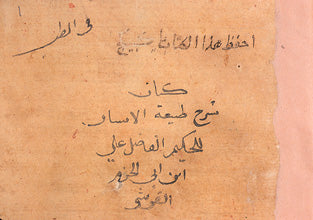
Revolution by the Ream
Paper, one of the most ubiquitous materials in modern life, was invented in China more than 2000 years ago. Nearly a millennium passed, however, before Europeans first used it, and they only began to manufacture it in the 11th and 12th centuries, after Muslims had established the first paper mills in Spain. The German Ulman Stromer, who had seen paper mills in Italy, built the first one north of the Alps at Nuremberg in the late 14th century.
The cultural revolution begun by Johann Gutenberg's printing press in 15th-century Mainz could not have taken place without paper mills like Stromer's, for even the earliest printing presses produced books at many times the speed of hand copyists, and had to be fed with reams and reams of paper. Our demand for paper has never been satisfied since, for we constantly develop new uses for this versatile material and new sources for the fiber from which it is made. Even today, despite the computer's promise to provide us with "paperless offices," we all use more paper than ever before, not only for communication but also for wrapping, filtering, construction and hundreds of other purposes.
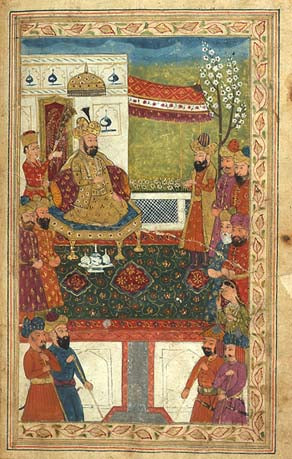
Scientific Inventions by Muslims
Inventions
Abul Hasan is distinguished as the inventor of the Telescope, which he described to be a Tube, to the extremities of which were attached diopters”.
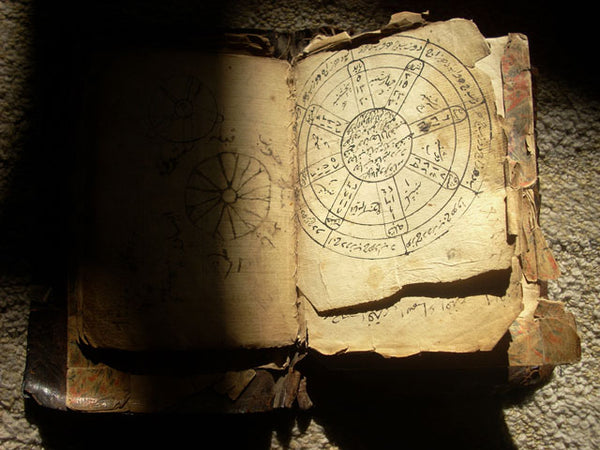
The Great Explorers of Islam
It was an Arab caravan which brought Hazrat Yusuf (Prophet Joseph) to Egypt. Moreover, the fertile areas in Arabia including Yemen, Yamama, Oman, Bahrein and Hadari-Maut were situated on the coast, and the Arabs being sea-faring people took sea routes in order to reach these places and fulfilling their commercial ventures.
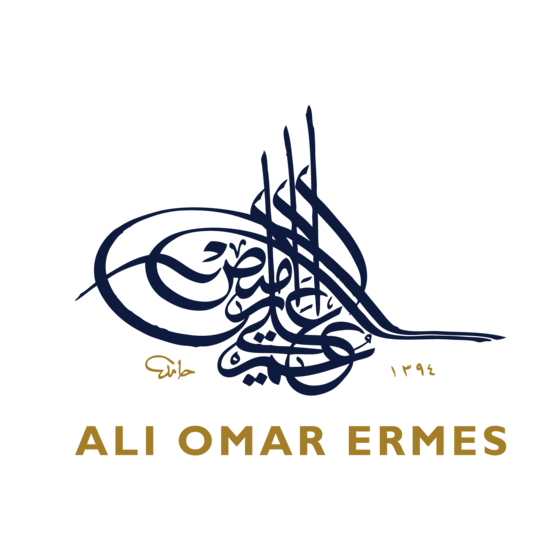

Ibrahim Umar Ibrahim
March 28, 2023
Alhamdulillah